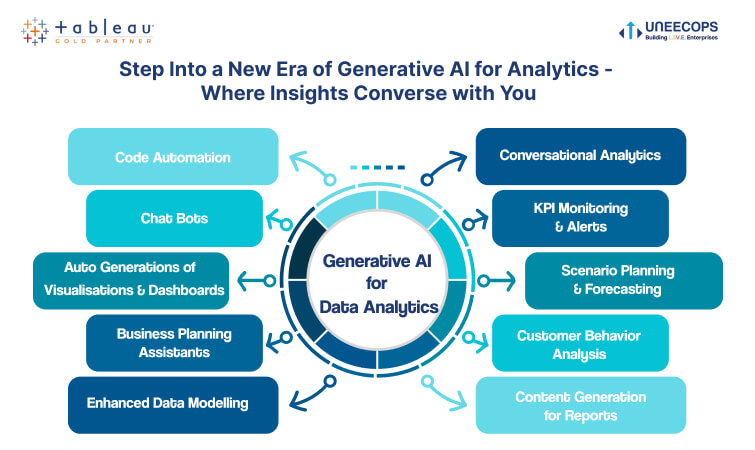Data is a unique resource that keeps growing, presenting opportunities along the way. In the realm of marketing today, data and analytics are two trendy topics. One of the most powerful technological developments, they are widely and globally implemented in industries such as banking, agriculture, health care and others.
Because of cloud applications, governments and private organizations may now monitor and analyze data in real-time and make improvements more quickly than ever.
Analytics and the area of data are always evolving. Insights may now be accessed more quickly and accurately thanks to the ongoing development of new technology. New trends also appear, bringing innovative ideas about how to do business and live in society.
CIOs and IT leaders can use rapidly evolving technologies and capabilities to harness this data and its value for the organization. IT leaders must prepare their teams and operations with the right knowledge, capabilities, and strategies to make sure they remain competitive in 2023 and beyond.
According to estimates, the global market for data analytics is expected to witness a compound annual growth rate (CAGR) of approximately 30.41% until the year 2030.
This post will discuss data and analytics trends 2023 that will impact how business sectors leverage analytics and data to drive business growth in 2023.
Top 7 Data and Analytics Trends in 2023
1. Digital Transformation
The Internet of Things, data, and machine learning are driving digital transformation, pushing technology in all directions.
According to the forecast provided by Statista, the number of Internet of Things (IoT) devices worldwide is expected to experience significant growth. The projection indicates that the count of IoT devices will nearly triple from 9.7 billion in 2020 to over 29 billion by 2030.
The sheer amount of data produced by these devices indicates that big data will continue to play an increasingly important role in our society.
2. Artificial Intelligence
Artificial intelligence will probably be the trending technology in 2023. In the coming days, it will impact our lifestyle, business, and way of working.
The impacts of AI on business analytics include the ability to make more accurate predictions, reduction of time spent on tedious and repetitive tasks, such as data collection and data cleaning, and the empowerment of the workforce to act on data-driven insights.
By using software algorithms, AI enables organizations to analyze data more quickly than manually. As a result, they get more data, which improves their performance. Machine learning is the type of AI most commonly used in business today.
3. Data as a Service (DaaS)
According to Statista, the global data as a service (DaaS) market is forecasted to experience a consistent growth trajectory in the upcoming years, leading to a projected revenue of 10.7 billion U.S. dollars by 2023.
This industry has developed where even newer, smaller players can readily join and make money.
Data may be used to generate value in even small markets. DaaS could be an intriguing approach to creating income if the data produced by your business has value for other people.
Therefore, now is a fantastic opportunity to reconsider your data offering and find new methods to participate.
4. Cloud Technology
According to a report from Forbes, over 90% of companies have embraced cloud technology and successfully migrated their workloads to the cloud. This trend of shifting workloads to the cloud is expected to continue in the coming years. Additionally, cloud technology is predicted to remain a prominent trend in 2023 and beyond.
Considering how quickly company and IT infrastructures change, cloud-native technologies are the only long-term option. However, because of their complexity, standardized, self-service tools are required to enable nontechnical users to gather, examine, and understand data.
5. Real-Time Data
Real-time data processing often requires more advanced data and analytics infrastructure, which is more expensive. However, the advantage is that we can act based on information.
This may include monitoring fraud warning signals in the financial services industry globally or analyzing website visitors’ clickstream data to determine what offers and promotions to present to them.
Transactions can be easily monitored. Social media platforms like Facebook analyze huge amounts of gigabytes of data every minute for various purposes.
6. Data Democratization
Enabling the entire workforce, including data engineers as well as data scientists, to use analytics efficiently will be one of the most important trends in 2023.
This is leading to the rise of a new type of augmented working where tools, software, and equipment put intelligent insights into the hands of everyone so that they can accomplish their tasks more successfully and effectively.
Businesses are now realizing the importance and necessity of using data analytics. In 2023, they will be able to realize that implementing data analytics into business operations is vital to understanding customers’ behavior and learning to create better services.
7. Technology and Wellness
Data is a crucial component of the health and wellness sector, which plays a significant role in human lives. Today’s medical services are looking for innovative ways to interact with their patients.
Additionally, businesses are attempting to identify and put into practice methods that enhance employee health.
Companies may now gather medical information from all across the world and use it in novel ways to find remedies faster than ever.
Hence, this tendency will aid in the development of more effective healthcare systems for the public in the coming days.
Conclusion
Elevate data value and capabilities to improve business outcomes. As organizations across the globe race to stay ahead of the competition, data analytics will likely continue to be a differentiating factor. The ability to generate and use business intelligence is a critical determinant of enterprise growth.
Data will help companies in 2023 develop better goods and services, optimize processes to cut costs and comprehend client requirements and expectations. In short, the data analytics space looks to have plenty of room for future growth.







